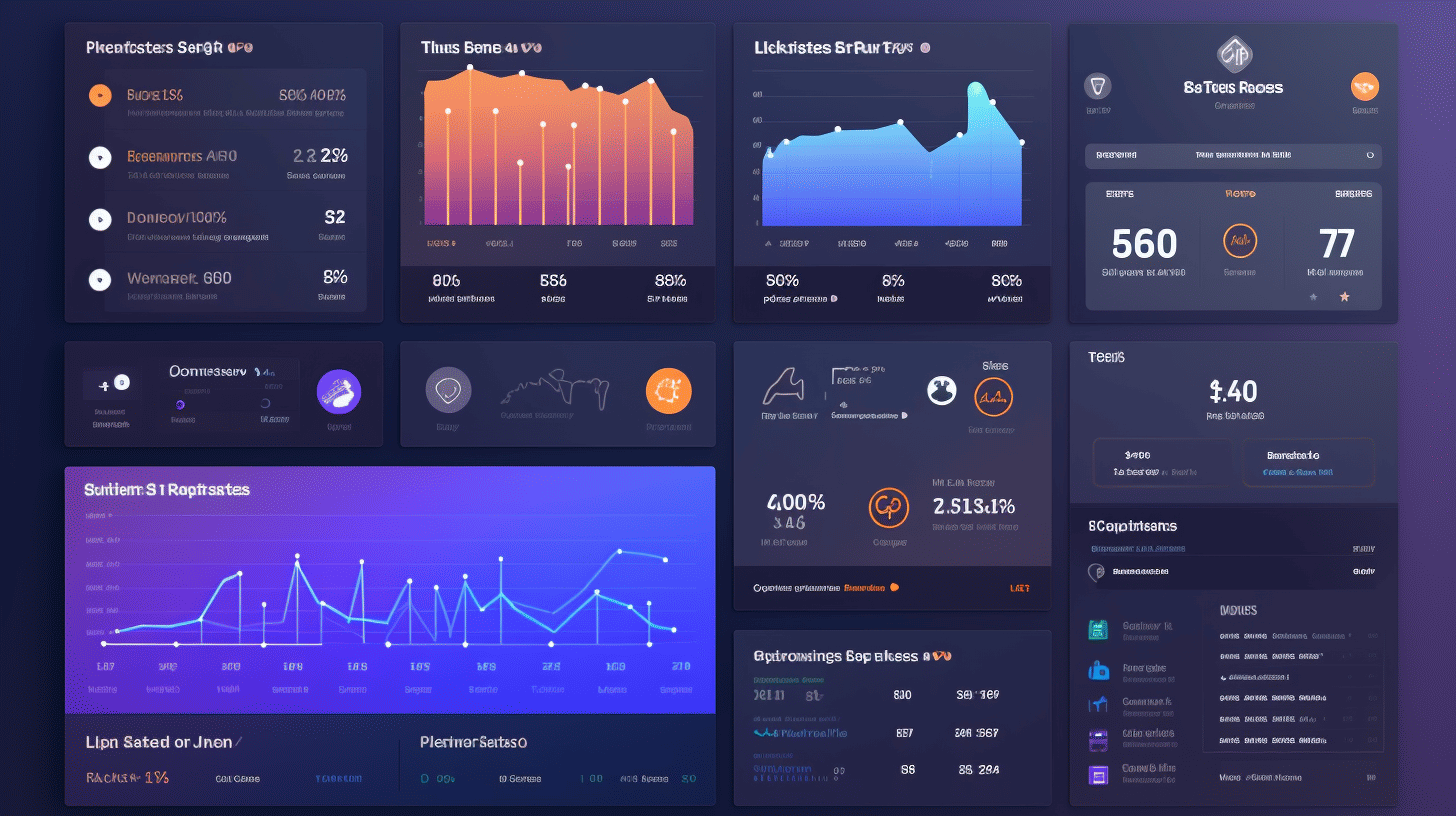在快節奏的數位世界中,網站作為企業和個人品牌的支柱,網站備份和復原的重要性不容小覷。想像一下,您花費無數的時間來製作引人入勝的內容、為搜尋引擎優化網站並建立忠實的受眾,但卻因技術故障或惡意攻擊而失去一切。這是任何網站所有者都不想經歷的噩夢。
在本文中,我們將探討網站備份和復原的基本步驟,特別關注 WordPress 使用者。無論您是個人部落客、電子商務店主還是希望建立強大網路形象的小型企業,了解如何保護和恢復您的網站都至關重要。
但是為什麼網站備份和還原如此重要?讓我們深入探討這個過程的重要性並探索它對網站所有者帶來的好處。
網站備份和復原的重要性
在現今的數位時代,網站是企業和個人的命脈,網站備份和復原的必要性怎麼強調也不為過。網站不僅僅是一個虛擬的店面;它是客戶互動、潛在客戶開發和收入創造的中心。任何資料中斷或遺失都可能對聲譽和底線造成毀滅性後果。
預防資料遺失
想像一下,您花了無數的時間來設計和策劃網站內容,但有一天醒來卻發現一切都消失了。無論是因為技術故障、駭客事件或網站崩潰,寶貴資料的遺失都可能造成災難性的後果。這就是網站備份和恢復發揮作用的地方。透過定期備份您的網站,您可以確保您擁有所有文件、資料庫和配置的最新副本。如果發生任何資料遺失,您可以快速將您的網站恢復到以前的狀態,從而無需從頭開始。
但是網站備份不是一次性的事情;它需要定期更新以納入最新的變更和補充。自動備份解決方案透過自動偵測和備份對您網站所做的任何變更來提供便利,確保您的資料始終是最新的。有了可靠的備份系統,您就可以放心,您的辛勤工作和寶貴資訊是安全的,並且可以輕鬆恢復。
降低網站駭客攻擊的風險
在當今的數位環境中,駭客攻擊是一個持續存在的威脅。網路犯罪分子不斷設計新方法利用網站漏洞、竊取敏感資料並破壞線上平台。然而,透過強大的網站備份和復原策略,您可以減輕與網站駭客攻擊相關的風險。方法如下:
- 快速恢復:如果不幸發生網站駭客攻擊事件,備份可以讓您迅速將網站恢復到駭客攻擊之前的狀態,最大限度地減少停機時間並阻止進一步的損害。
- 隔離備份:透過建立儲存在安全位置的單獨備份,您可以防止駭客存取您的備份檔案。這可確保即使您的即時網站受到威脅,您的備份仍然完好無損。
- 保留政策:備份解決方案通常提供保留策略,允許您儲存網站的多個版本。如果駭客攻擊長期未被發現,這將特別有用。透過安全儲存您網站的先前版本,您可以恢復到乾淨狀態而不會丟失寶貴的資料。
輕鬆切換伺服器
在伺服器切換時,網站備份和復原也起著至關重要的作用。有時,企業可能需要更換託管服務提供者或升級到效能更高的伺服器。在這些情況下,網站備份和還原可以透過以下方式簡化過渡過程:
- 無縫遷移:透過備份,您可以輕鬆地將您的網站遷移到新伺服器,而不必擔心資料遺失或服務中斷。
- 測試目的:在進行任何伺服器切換之前,必須在新環境中測試您的網站的功能和效能。透過使用備份建立暫存站點,您可以確保上線前一切順利運作。
總而言之,網站備份和復原對於任何擁有網站的人來說都是必不可少的做法。透過實施可靠的備份系統,您可以防止資料遺失、防止駭客攻擊並促進伺服器切換。不要等到為時已晚;投資網站備份和復原以保障您的線上狀態並維護您的商業或個人網站的連續性。
了解網站備份的基礎知識
🔒 什麼是網站備份?
在當今數位時代,網站已成為企業、組織和個人的重要組成部分。它們是品牌的門面、資訊中心和線上交易的門戶。由於風險如此之大,保護您的網站免受資料遺失、駭客攻擊或伺服器故障等潛在災難的影響至關重要。這就是網站備份發揮作用的地方。
網站備份是指在單獨的位置建立和儲存網站資料、檔案和資料庫的副本的過程。這些備份充當了安全網的作用,讓您可以在出現問題時將網站恢復到以前的狀態。這就像為您寶貴的線上形象購買了一份保險。
🗃️ 不同類型的網站備份
並非所有網站備份都是平等的。有多種備份方法和類型可供選擇,每種方法和類型都有自己的優點和注意事項。一些常見的網站備份類型包括:
- 完整備份:此類備份會建立您的整個網站的完整副本,包括所有檔案、資料庫和配置。完整備份是全面的,但規模可能較大且恢復所需的時間可能更長。
- 增量備份:增量備份僅儲存自上次備份以來所做的變更。這種方法效率更高,佔用的儲存空間和執行時間更少。但是,從增量備份還原網站可能會稍微複雜一些。
- 規劃備份:透過排程備份,您可以設定自動備份的特定日期和時間。這可確保您的網站定期備份,而無需人工幹預。
💡 您應該多久備份一次您的網站?
備份您的網站不是一次性的任務;這是一個持續的做法,應該成為您定期網站維護工作的一部分。備份的頻率取決於各種因素,例如您擁有的內容類型、內容變更的頻率以及網站的關鍵性。以下是一些需要考慮的一般準則:
- 關鍵內容:如果您擁有重要內容或經常更新您的網站,則必須更頻繁地備份以最大限度地降低資料遺失的風險。在這些情況下,建議每天或每週備份。
- 更新頻率較低的內容:對於內容變化不頻繁的網站,例如靜態網站或博客,每週或每月備份可能就足夠了。
- 電子商務和交易網站:如果您的網站涉及線上交易,則更頻繁地備份以保護客戶資料至關重要。通常建議對這些類型的網站進行每日備份。
請記住,備份您的網站不是一項設定後就忘記的任務。定期監控備份流程、測試備份的完整性以及隨著網站的發展更新備份策略至關重要。
透過投入時間和精力進行網站備份,您可以保護您的線上狀態並確保您的網站能夠從任何不可預見的事件中恢復。請記住,當遇到網站災難時,預防總是比復原更好。
🔑 重點
- 網站備份是在單獨的位置建立網站資料、檔案和資料庫的副本以進行保護的過程。
- 不同類型的備份包括完整備份、增量備份和計畫備份。
- 備份的頻率取決於內容類型和網站的關鍵性等因素。
- 根據您網站的內容和活動,通常會進行每日、每週或每月備份。
如何備份你的 WordPress 網站
🔐 確保您網站的安全至關重要。您可以採取的最重要的措施之一是定期備份您的 WordPress 網站。這種做法不僅可以保護您寶貴的數據,而且還可以在發生駭客攻擊、伺服器崩潰或用戶錯誤等不可預見的事件時提供安全網。
手動備份
✍️ 備份 WordPress 網站的一種方法是手動下載所有檔案和資料庫。這聽起來可能很艱鉅,但這是一個簡單的過程,可讓您完全控制備份。您可以按照以下方式操作:
- 檔案備份:透過 FTP(檔案傳輸協定)存取您的網站伺服器並下載構成您的 WordPress 網站的所有檔案。這包括主題、外掛和上傳的媒體等文件。
- 資料庫備份:登入您的主機服務提供者的控制面板並存取 phpMyAdmin(管理您的 WordPress 資料庫的工具)。從那裡,選擇您的 WordPress 資料庫並將其匯出到本機檔案。該文件包含儲存在您網站資料庫中的所有重要信息,包括貼文、頁面、評論和使用者詳細資訊。
⚠️ 記住:定期執行這些手動備份,最好在單獨的儲存裝置或雲端平台上進行,以最大限度地降低資料遺失的風險。
使用 WordPress 插件
💡 值得慶幸的是,WordPress 提供了大量插件,簡化了備份過程。這些插件可自動化備份過程並提供附加功能以便於復原。以下是一些受歡迎的備份插件:
- 上升氣流增強版:UpdraftPlus 擁有超過 200 萬個活躍安裝,可讓您安排自動備份並將其儲存在 Dropbox、Google Drive 和 Amazon S3 等雲端平台上。
- VaultPress:VaultPress 由 WordPress.com 背後的公司 Automattic 開發,提供即時備份、自動復原和安全掃描。它與 WordPress 儀表板無縫集成,讓您可以輕鬆管理備份。
- 備份夥伴:這個全面的備份插件可讓您安排備份,將其儲存在雲端中,甚至將您的網站遷移到新伺服器。它還提供自訂備份中包含的檔案和資料庫的選項。
🛡️ 請記住選擇信譽良好、評價良好且經常更新的備份插件,以確保與最新的 WordPress 版本相容。
使用網站託管服務
🌐 許多網站寄存服務供應商都提供備份服務作為其寄存包的一部分。這些服務會自動備份您的 WordPress 網站並將備份儲存在他們的伺服器上。以下是一些提供備份服務的知名主機服務提供者:
- 藍主機:Bluehost 在其託管計劃中包含免費的每日備份,讓您只需點擊即可恢復您的網站。
- 站點地面:SiteGround 為其客戶提供每日自動備份,在任何時間保留您網站的 30 份副本最多。它們提供簡單的恢復功能,甚至允許您將備份下載到本機。
- WP引擎:WP Engine 以其託管的 WordPress 主機而聞名,其計劃中包含自動每日備份。他們還提供按需備份和簡單的一鍵恢復選項。
🔄 無論選擇哪種方法,備份您的 WordPress 網站都是維護其完整性和保護您的辛勤工作的必要步驟。請記住建立備份計劃,安全儲存備份,並定期測試復原程序以確保一切正常運作。
🔒 不要等到為時已晚-立即採取必要措施,實施可靠的備份策略來保護您的網站!
恢復您的 WordPress 網站
您是否曾經歷過驚慌失措的時刻,意識到您的 WordPress 網站已關閉或受到攻擊?這是許多網站所有者在某些時候都面臨的挑戰。但不要害怕!透過正確的步驟和故障排除技術,您可以恢復您的 WordPress 網站並使其恢復順利運作。在本文中,我們將引導您完成恢復 WordPress 網站的過程並提供常見恢復問題的解決方案。讓我們開始吧!
恢復過程中應遵循的步驟
恢復 WordPress 網站可能是一項艱鉅的任務,但透過遵循系統化的方法,您可以讓流程更順暢、更有效。以下是恢復WordPress網站應採取的步驟:
- 評估問題:第一步是識別並了解問題。您的網站是否完全癱瘓了,或者是否有特定區域受到影響?這是技術問題還是安全漏洞?評估問題將幫助您縮小潛在原因的範圍並確定適當的行動方案。
- 檢查伺服器狀態:如果您的網站完全癱瘓,檢查伺服器的狀態就至關重要。造訪您的託管服務提供者的網站或聯絡他們的支援團隊,以了解是否存在可能影響您網站的伺服器範圍的問題。
- 從備份還原:如果您定期備份您的 WordPress 網站(您應該這樣做!),您可以從先前的備份中還原您的網站。大多數託管服務提供者透過其控制面板提供備份和復原選項,或提供用於此目的的插件。
- 掃描惡意軟體:如果您的網站已被入侵,您將需要掃描惡意軟體和惡意程式碼。使用信譽良好的安全性外掛程式(例如 Sucuri 或 Wordfence)徹底掃描您的網站。這些外掛程式將幫助您識別並刪除可能導致問題的任何惡意檔案或程式碼。
- 更新 WordPress 核心和插件:過時的 WordPress 核心檔案和外掛程式可能會使您的網站容易受到安全漏洞和技術故障的攻擊。確保將 WordPress 核心檔案和所有已安裝的外掛程式都更新到最新版本。此步驟將有助於確保您的網站的穩定性和安全性。
- 仔細檢查主題兼容性:有時,編碼不當或過時的主題可能會導致您的 WordPress 網站出現問題。透過切換到預設 WordPress 主題(例如 Twenty Twenty-One)來檢查主題相容性。如果使用其他主題時問題已解決,則可能需要更新或取代目前主題。
- 尋求專業協助:如果您已遵循上述所有步驟,但 WordPress 網站仍然出現問題,則可能是時候尋求專業協助了。聯絡值得信賴的 WordPress 開發人員或支援服務以獲得進一步的協助和指導。
排除常見恢復問題
在恢復您的 WordPress 網站時,您可能會遇到一些需要額外故障排除的常見問題。以下是一些常見的恢復問題及其可能的解決方案:
- 死機白螢幕:如果您的網站顯示空白屏,即所謂的“死機白屏”,這通常是由 PHP 錯誤引起的。要診斷問題,您可以透過將以下程式碼新增至 wp-config.php 檔案來啟用 WordPress 偵錯:
定義('WP_DEBUG', true );定義('WP_DEBUG_LOG', true );定義('WP_DEBUG_DISPLAY',false);
這將在您的 wp-content 目錄中建立一個 debug.log 文件,其中將包含錯誤訊息並幫助找出問題的原因。
- 建立資料庫連線時發生錯誤:連接到您的網站的資料庫時出現問題,通常會出現此錯誤訊息。檢查 wp-config.php 檔案中的資料庫憑證並確保它們正確無誤。如果問題仍然存在,請聯絡您的主機服務供應商以確保您的資料庫伺服器正常運作。
- 網站無回應或運作緩慢:網站速度緩慢或無回應可能由多種因素造成,包括外掛程式過多、主題過重或伺服器問題。首先停用不必要的外掛程式並切換到輕量級主題,看看是否可以提高效能。如果問題仍然存在,請聯絡您的主機服務提供者以檢查是否存在任何與伺服器相關的問題。
請記住,恢復 WordPress 網站需要耐心和仔細的故障排除。透過遵循上面概述的步驟並解決常見的復原問題,您將能夠更好地恢復您的網站並確保其順利運作。祝你好運!
WordPress 備份和復原的最佳實踐
備份您的 WordPress 網站就像為您的線上狀態投保一樣。它可確保您擁有網站資料的副本,以防出現任何問題,讓您能夠快速輕鬆地恢復。然而,這不僅僅是創建備份;它還涉及遵循最佳實踐以確保其有效性。在本節中,我們將探討一些 WordPress 備份和復原的基本技巧,以保護您的網站。
1.定期安排自動備份
WordPress 備份和復原最重要的最佳實踐之一是建立定期備份計畫。這可確保您的網站內容、主題、外掛程式和資料庫一致備份。透過自動化流程,您可以放心,因為您知道無需人工幹預即可建立定期備份。
2. 選擇可靠的備份解決方案
WordPress 有多種備份外掛和服務,但並非所有外掛和服務都是平等的。選擇可靠且信譽良好的備份解決方案來滿足您的特定需求至關重要。尋找增量備份、異地儲存選項和簡單的復原過程等功能。
3. 將備份儲存在異地
將備份儲存在託管您網站的相同伺服器上是有風險的。如果伺服器出現問題,您將遺失您的網站和備份。相反,選擇異地儲存解決方案,例如雲端服務或外部伺服器。這提供了額外的安全層,並確保即使您的網站發生災難性故障,您的備份也是安全的。
4.定期測試備份
創建備份是不夠的;您需要確保它們能夠正常運作並且可以成功恢復。定期測試您的備份可確保它們沒有損壞或不完整。最好在測試期間發現備份中存在的問題,而不是在危機時刻才發現。
5.多個版本的備份
擁有多個版本的備份可讓您回溯並將您的網站還原到特定的點(如果需要)。如果您意外刪除了重要資訊或您的網站受到威脅,這將非常有用。透過擁有多個備份點,您在復原選項方面擁有更大的靈活性。
“定期備份您的網站就像為您的家準備一把備用鑰匙一樣——擁有備份計劃總是好的。” – 未知
透過遵循這些 WordPress 備份和復原的最佳實踐,您可以確保您的網站保持安全、可靠且易於恢復。請記住,對於潛在的網站災難,預防勝於治療。因此,花點時間實施強大的備份策略,並放心地知道您的線上狀態受到良好的保護。
結論
總而言之,網站備份和復原是管理和保護您的 WordPress 網站的重要方面。透過定期備份您的網站,您可以防止寶貴的資料遺失,降低駭客攻擊的風險,並確保切換伺服器時的順利過渡。
說到備份,有多種方法可用,包括手動備份、使用 WordPress 外掛程式或利用網站寄存服務。選擇最適合您需求和偏好的方法。
如果不幸您需要恢復您的 WordPress 網站,請按照正確的步驟並排除任何問題可以幫助您快速恢復並運行。記住保持冷靜並依靠備份將您的網站恢復到以前的狀態。
為確保 WordPress 備份和復原的最佳實踐,請考慮以下提示:
- 定期安排備份以最大限度地降低資料遺失的風險。
- 將備份儲存在安全的異地位置以增加保護。
- 定期測試您的備份以確保其完整性。
- 保持您的網站和外掛程式為最新版本,以防止安全漏洞。
- 實施強密碼和安全措施來阻止駭客。
總的來說,優先考慮網站備份和復原對於 WordPress 網站的長期成功和安全至關重要。透過投資可靠的託管 WordPress 主機平台(如 Managed-WP),您可以簡化備份過程,並安心地知道您的網站在可靠的人手中。
因此,請立即採取必要措施保護您的網站,並探索 Managed-WP 高級託管 WordPress 雲端託管平台的優勢。
託管WP – 使用 Managed-WP 全面託管的 WordPress 託管解決方案簡化您的網站備份和還原。
常見問題解答
- 為什麼網站備份和還原對 WordPress 用戶很重要?
網站備份和復原對於 WordPress 用戶來說非常重要,因為它有助於保護他們的網站免受因事故、駭客攻擊、伺服器故障或其他不可預見的事件造成的資料遺失。它提供了一種快速、簡單地恢復網站的方法。
- WordPress 網站備份和復原的必要步驟是什麼?
WordPress 中網站備份和復原的基本步驟包括選擇可靠的備份外掛程式、安排定期備份、將備份儲存在安全的位置(異地或雲端儲存)、測試備份的完整性以及製定復原計畫。
- 推薦 WordPress 用戶使用哪些備份外掛?
一些受歡迎且強烈推薦的 WordPress 用戶備份外掛是 UpdraftPlus、BackupBuddy 和 VaultPress。這些外掛提供簡單的設定、自動備份和無縫恢復選項。
- 我應該多久備份一次我的 WordPress 網站?
建議每周至少備份一次您的 WordPress 網站。但是,頻率可能會根據您更新或新增新內容的頻率而有所不同。變化較頻繁的網站應該考慮更頻繁地備份。
- 我的 WordPress 網站備份應該包含什麼?
在您的 WordPress 網站備份中,您應該包含所有網站檔案(主題、外掛程式、圖片等)、WordPress 資料庫以及對您網站功能至關重要的任何其他檔案或自訂配置。



















